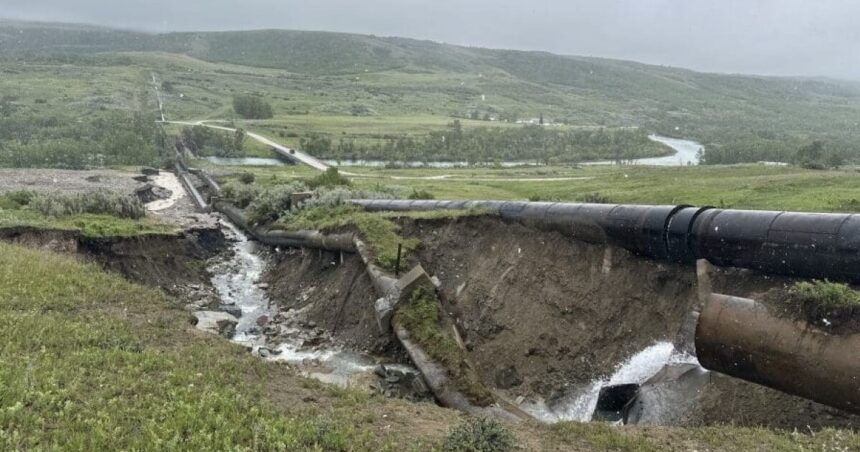The Blackfeet Tribe and the U.S. Bureau of Reclamation are collaborating to address the impacts of the recent St. Mary Canal siphon failures, tribal officials announced on Tuesday.
On June 17, a section of the St. Mary Canal siphon ruptured, causing localized flooding in Babb, located in the northern part of the Blackfeet Reservation.
The canal is a crucial part of the Milk River Irrigation Project, connecting the St. Mary River basin to the Milk River and providing irrigation water for 121,000 acres of land in Canada and along Montana’s Hi-Line.
The failure was attributed to the age of the siphon pipes, which were installed in 1915, more than a century ago, and a lack of funding for replacement over the years, as reported by the Montana Free Press.
Bureau of Reclamation project manager Steve Darlinton explained that the original construction of the siphon had not been significantly updated or replaced, leading to its eventual failure due to its age.
Efforts have been made to mitigate the damage, with the diversion from the St. Mary River being closed off to halt the flow to the siphon system, though it will take over eight hours to drain completely. As of noon on June 18, water leakage from the siphons had slowed down but not yet stopped.
The siphon failures also impacted local businesses and aquatic lands, causing concerns for both revenue loss and environmental damage.
Blackfeet member Bill Powell, who owns businesses near the site of the failures, expressed concerns about road closures, property damage, and loss of revenue due to the disruptions caused by the flooding.
Despite the challenges, efforts are being made to address the situation, with Bureau of Reclamation personnel working on constructing a new road and plans to collaborate with the tribe for cleanup and restoration efforts.
Spotted Eagle Jr. emphasized the need for collaboration between the tribe and the bureau to address the impacts on tribal lands, aquatic life, and downstream agriculture users who rely on the irrigation system.
Meetings have been held to establish communication and partnership between tribal leaders, agencies, and the Bureau of Reclamation to navigate the cleanup and restoration processes following the siphon failures.





